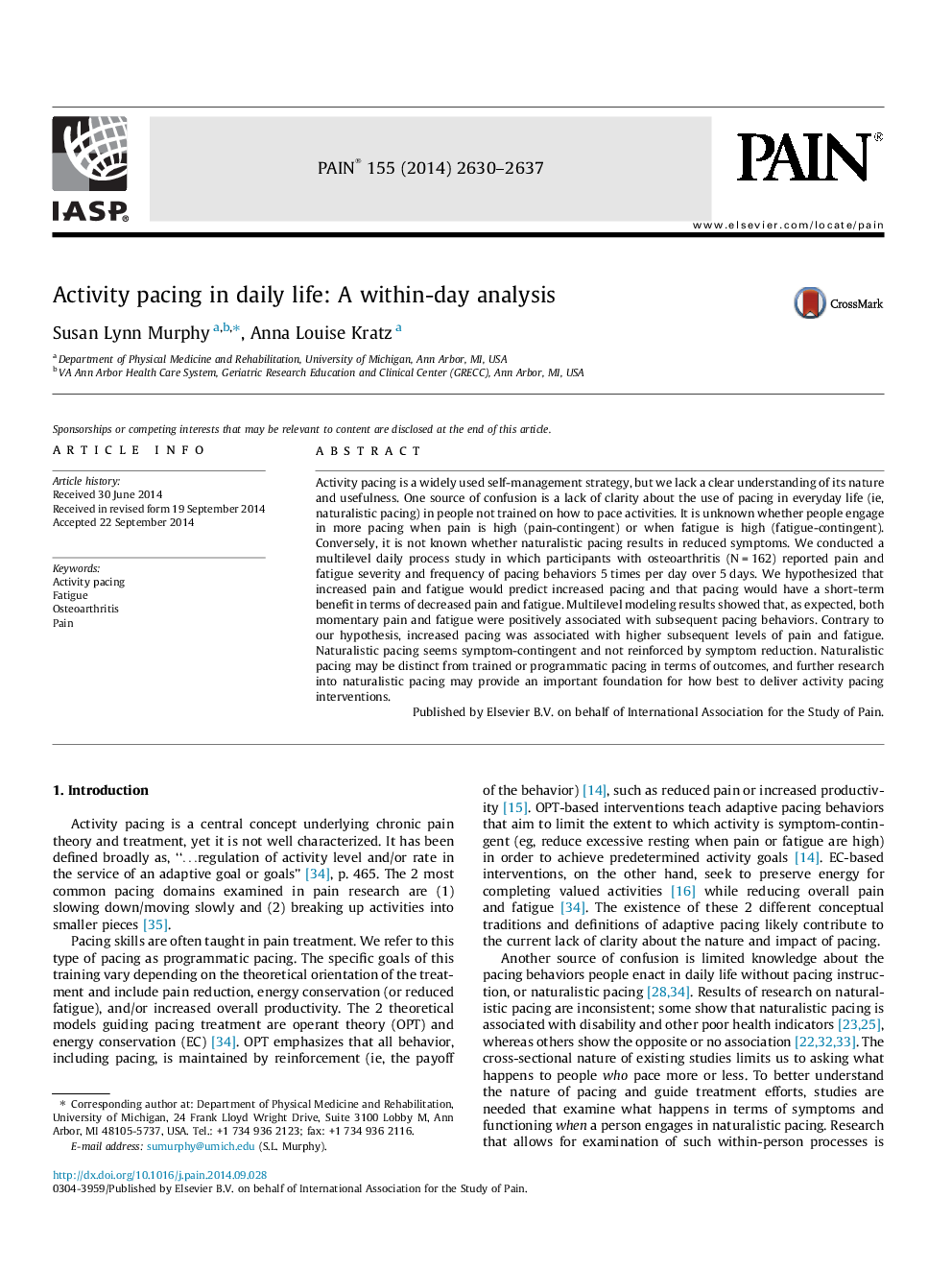| کد مقاله | کد نشریه | سال انتشار | مقاله انگلیسی | نسخه تمام متن |
|---|---|---|---|---|
| 7270344 | 1473237 | 2014 | 8 صفحه PDF | دانلود رایگان |
عنوان انگلیسی مقاله ISI
Activity pacing in daily life: A within-day analysis
ترجمه فارسی عنوان
پتانسیل فعالیت در زندگی روزمره: تجزیه و تحلیل روزانه
دانلود مقاله + سفارش ترجمه
دانلود مقاله ISI انگلیسی
رایگان برای ایرانیان
کلمات کلیدی
گام فعال، خستگی، آرتروز، درد،
موضوعات مرتبط
علوم زیستی و بیوفناوری
علم عصب شناسی
علوم اعصاب سلولی و مولکولی
چکیده انگلیسی
Activity pacing is a widely used self-management strategy, but we lack a clear understanding of its nature and usefulness. One source of confusion is a lack of clarity about the use of pacing in everyday life (ie, naturalistic pacing) in people not trained on how to pace activities. It is unknown whether people engage in more pacing when pain is high (pain-contingent) or when fatigue is high (fatigue-contingent). Conversely, it is not known whether naturalistic pacing results in reduced symptoms. We conducted a multilevel daily process study in which participants with osteoarthritis (NÂ =Â 162) reported pain and fatigue severity and frequency of pacing behaviors 5Â times per day over 5Â days. We hypothesized that increased pain and fatigue would predict increased pacing and that pacing would have a short-term benefit in terms of decreased pain and fatigue. Multilevel modeling results showed that, as expected, both momentary pain and fatigue were positively associated with subsequent pacing behaviors. Contrary to our hypothesis, increased pacing was associated with higher subsequent levels of pain and fatigue. Naturalistic pacing seems symptom-contingent and not reinforced by symptom reduction. Naturalistic pacing may be distinct from trained or programmatic pacing in terms of outcomes, and further research into naturalistic pacing may provide an important foundation for how best to deliver activity pacing interventions.
ناشر
Database: Elsevier - ScienceDirect (ساینس دایرکت)
Journal: PAIN® - Volume 155, Issue 12, December 2014, Pages 2630-2637
Journal: PAIN® - Volume 155, Issue 12, December 2014, Pages 2630-2637
نویسندگان
Susan Lynn Murphy, Anna Louise Kratz,
